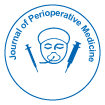
周術期医学ジャーナル
オープンアクセス
ISSN: 2684-1290

ISSN: 2684-1290
R.Rambaran, D.Ventour
Synopsis: The mortality rate was 50.0% among the patients ventilated in the general wards, 40.9% for the emergency department, 22.2% for the recovery room in the operating theatre. Overall the process of care was better than anticipated, however many aspects of patient care were indeed lacking and much more improvement is required. Background: At the Eric Williams Medical Sciences Complex (EWMSC), a tertiary hospital in the developing country of Trinidad and Tobago, there has been an increased demand for intensive care. There persists a shortage of ICU beds resulting in the mechanical ventilation of critically ill patients at different wards in a non-ICU setting. Objective: The aim of this study was the evaluation of the morbidity and mortality of these mechanically ventilated patients outside ICU, and assesses their process of care at these locations in hospital. Design: This was a prospective, observational and non-interventional study conducted over a period of four (4) months at EWMSC. Setting: EWMSC is a 500-bed hospital with only six (6) ICU beds available when fully staffed. Patients: Forty-six (46) patients were mechanically ventilated outside the ICU during these four months. They were managed in the emergency department, operating theatre’s recovery room, high dependency unit, general medical and surgical wards. Results:The mean age was 52 years, with 67.4% of the patients being female. The average APACHE score was 23.4 �?� 10.08 SD, and the survival rate of patients with an APACHE II score >21 was 61%. Survivors were the younger patients of age 47.37 �?� 17.95 SD, with lower APACHE II scores of 21.97 �?� 10.02 SD. Patients were ventilated for an average of 1.13+/-1.2 SD days prior to being admitted to the intensive care unit. IPPV at 48 hours was associated with increased mortality; however those who survived beyond this period were more likely to survive. The mortality rate was 50.0% among the patients ventilated in the general wards, 40.9% for the emergency department, 22.2% for the recovery room in the operating theatre. All the patients managed in HDU survived to hospital discharge. Most patients received basic vital signs monitoring, family counselling, and blood glucose testing, intravenous fluids as prescribed, sedation and neuromuscular blockade as prescribed, weaning from the ventilator, antibiotics, and inotropes vasopressors as prescribed. Overall mortality rate was 34.5%. The survival rate was 76.0% for the group admitted to ICU and 56.5% was the survival rate in the group that was never admitted to the ICU. Conclusion: Patients mechanically ventilated in ICU had a lower mortality rate than those intubated and mechanically ventilated outside the ICU. The best survival rates were among the patients cared for in the recovery room of the operating theatre and high dependency unit. Overall the process of care was better than anticipated, however many aspects of patient care were indeed lacking and much more improvement is required. Adequate provision of ICU beds is a necessity. At EWMSC, there is the demand for more beds, staffing, equipment and implementation of ICU admission discharge policies, to effectively improve the quality of patient care and outcomes.